Novel writing is an emotional rollercoaster.
It begins with feeling overwhelmed. There is nothing as intimidating as a blank page.
Then there is the feeling of excitement when ideas begin to flow. Then you feel the satisfaction of creating a world from scratch.
Then there’s frustration when you’re hit with writer’s block. And you will get writer’s block.
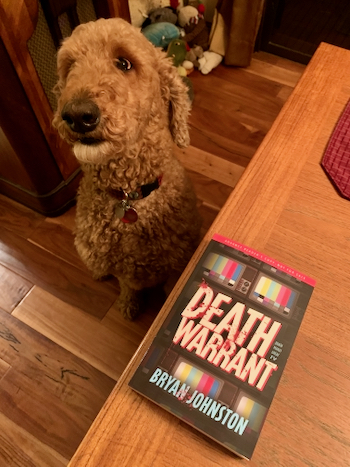
What the Writer’s Emotional Roller Coaster is Like
Then exhilaration when you’re hit with a flash of inspiration to break the writer’s block.
Then frustration when you go back and reread your work and see all the things that don’t work.
Then intimidation again as you begin rewriting. Then massive satisfaction when you’re finished.
Then in over your head when you begin writing query letters. Then the absolute misery of rejection. And there will be a lot of rejection.
Then indescribably joy when your book gets published. Then exhaustion when you begin marketing it.
By far the hardest part is the rejection.
It’s so easy to want to give up.
But as someone once told me, it only takes one yes. That’s what got me through all the rejection.
How to Learn About Story Structure by Watching Movies
You can still learn a lot about how to structure your novel by watching movies. Case in point: scenes.
In a standard three act movie that runs 120 minutes there will be, on average, between 40-60 scenes.
- About a dozen scenes in the Set Up (the Hook)
- Twenty-five scenes in the Confrontation (the Middle Build)
- About another dozen scenes in the Resolution (the Payoff)
Or more simply: 25%/50%/25%.
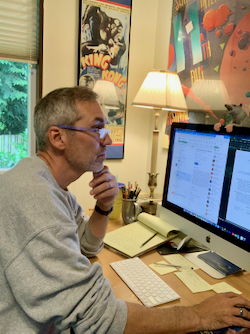
Plotting Your Story with Sticky Notes
When I began writing my current work in progress I started as I always do with a story outline and then began making short one or two-sentence descriptions of what took place in each scene.
I wrote these descriptions on sticky notes and stuck them to my closet doors.
I know that there’s actual software for this (Scrivener comes to mind) but I’m too tactile for that. I like to be able to stand back twelve feet from my wall of scenes and take it all in before invariably moving the sticky notes around as the story evolves.
And this is where it got interesting.
I had my sticky note scenes broken out into three acts, but I’d done it purely on instinct. I thought, hmmm, this scene wraps up the first act nicely, this scene wraps up the second act nicely, and this scene makes a strong conclusion.
I hadn’t counted scenes, I hadn’t figured out the 25/50/25 percentages, I wrote it how I saw my story play out like a movie.
Here’s how the scenes numbered:
- Act 1—13 scenes
- Act 2—24 scenes
- Act 3—13 scenes
None of this was planned. It was completely instinctual.
And if you ask me, I’d say it probably had something to do with the fact that I’ve watched a gazillion movies and the structure had ingrained itself in my head purely through osmosis.
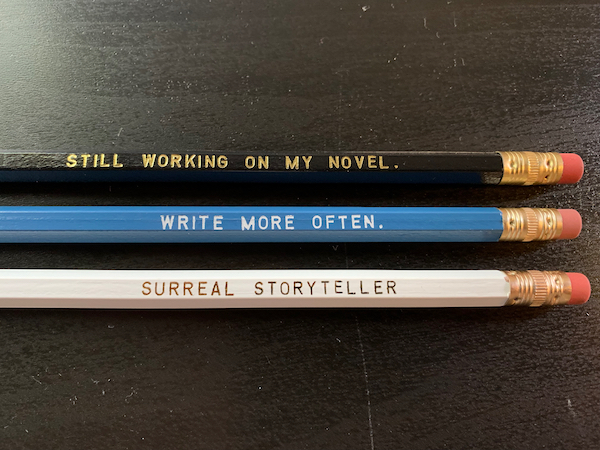
A Writer’s Greatest Marketing Tool
The greatest marketing tool at your disposal is other people.
Especially other people in the media.
Sadly, most people don’t have that media angle.
Beyond that, I’ve found that creating video content and posting it to social media has helped a bit. I release a steady stream of content, starting about a month ahead of the publishing date, to keep my book top of mind.
For example, I will create a simple :15 video that touches on one interesting factoid about the story. They’re little teasers. In a month I’ve created 30 teasers.
How I Find Time to Write
[To find time to write], I simply make it a point to go downstairs after dinner and write for an hour or two most nights.
I don’t try to do it every night, but if I’m working on a project then I try to work on it five nights a week.
Once you make it part of your routine, you actually feel guilty if you don’t do it.
Does it take discipline? Absolutely. But like I said, eventually, it’s simply part of your evening routine.
Advice for a Young Writer
Go for it. Just don’t expect to do it for a living.
* * *
Bryan Johnston takes tremendous pride in being an eleven-time Emmy award-winning writer and producer during his 25 years in local network television. Following his career in broadcast, he became the Creative Director for a Seattle-based creative agency, developing concepts and writing scripts for companies like Microsoft, Starbucks, and Amazon.
He has authored several books and written for numerous magazines and websites.
Bryan lives in the Seattle, Washington area with his wife, two kids, and one large Goldendoodle. He is a devout movie lover, sports fan, and avid reader. His one great hope is for the Seattle Mariners to make it to the World Series before he dies. He’s not holding his breath.
For more information on Bryan and his work, please see his website and connect with him on Facebook, Twitter, LinkedIn, and Vimeo.
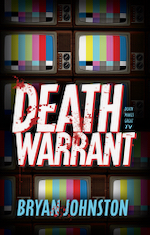 Death Warrant: Death Makes Great TV.
Death Warrant: Death Makes Great TV.
Frankie Percival is cashing in her chips. To save her brother from financial ruin, Frankie—a single stage performer and mentalist who never made it big—agrees to be assassinated on the most popular television show on the planet: Death Warrant. Once she signs her life away, her memory is wiped clean of the agreement, leaving her with no idea she will soon be killed spectacularly for global entertainment.
After years of working in low-rent theaters, Frankie prepares for the biggest performance of her life as her Death Warrant assassin closes in on her. Every person she encounters could be her killer. Every day could be her last.
She could be a star, if only she lives that long.
Available at CamCat Books, Amazon, and wherever books are sold.
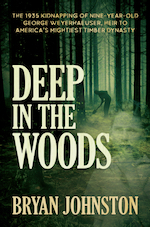 Deep in the Woods: It is a crime even the FBI must have considered fantastic and absurd.
Deep in the Woods: It is a crime even the FBI must have considered fantastic and absurd.
In 1935, nine-year-old George Weyerhaeuser, heir to one of the wealthiest families in America, is snatched off the streets two blocks from his home. The boy is kept manacled in a pit, chained to a tree, and locked in a closet.
The perps—a career bank robber, a petty thief, and his nineteen-year-old never-been-in-trouble Mormon wife—quickly become the targets of the biggest manhunt in Northwest history. The caper plays out like a Hollywood thriller with countless twists and improbable developments.
Perhaps the most astonishing thing of all, though, is how it all ends.
Available at Amazon.

